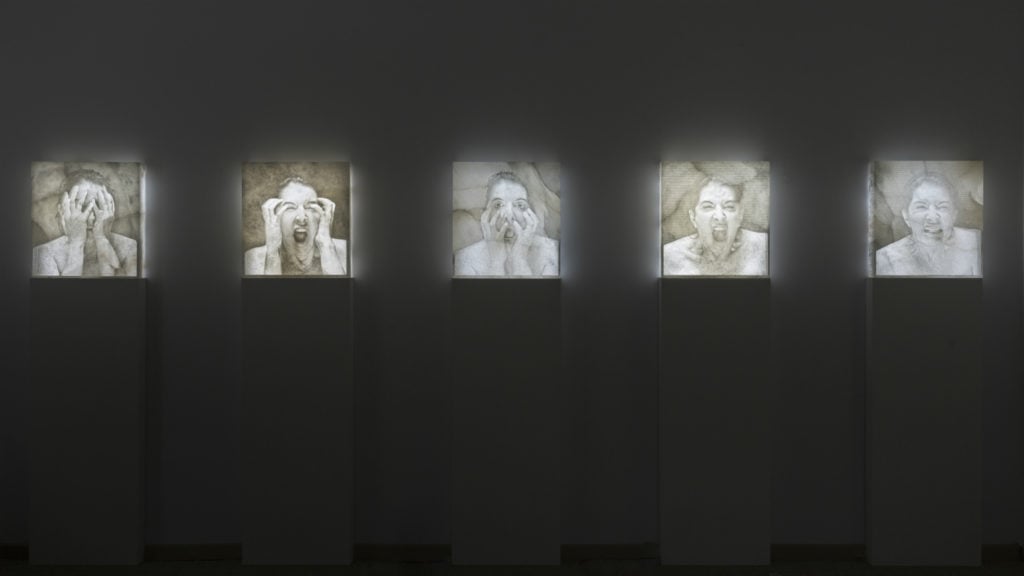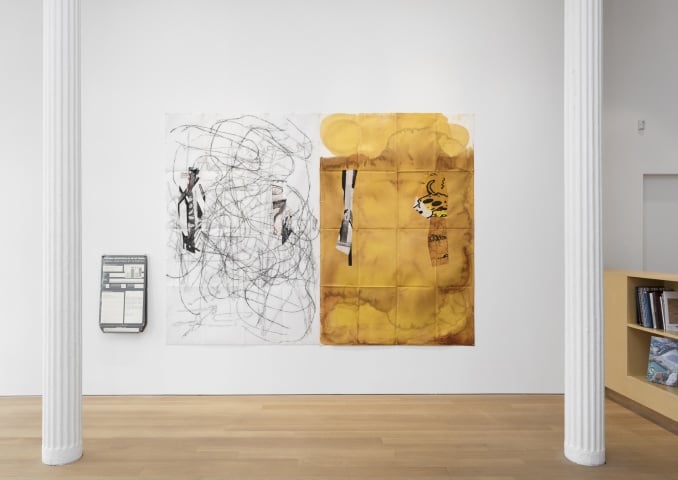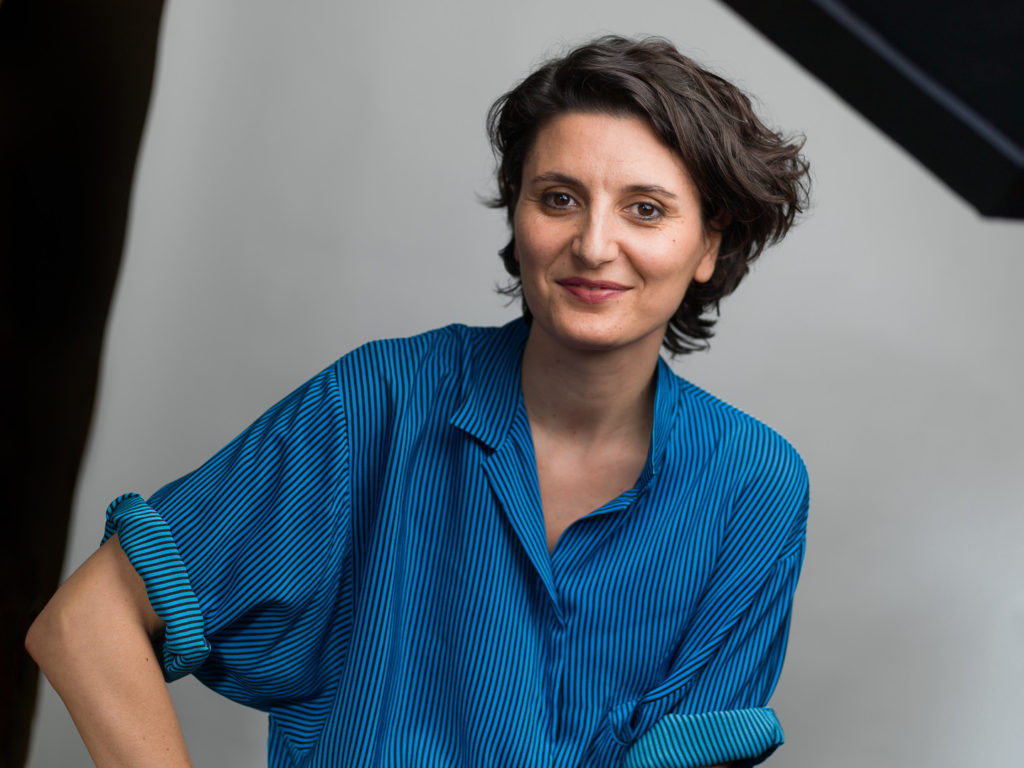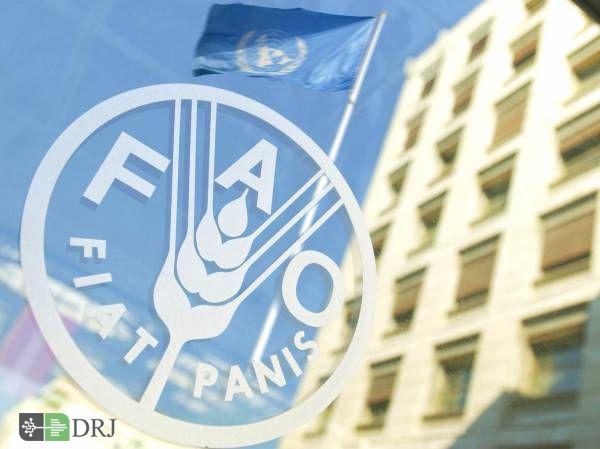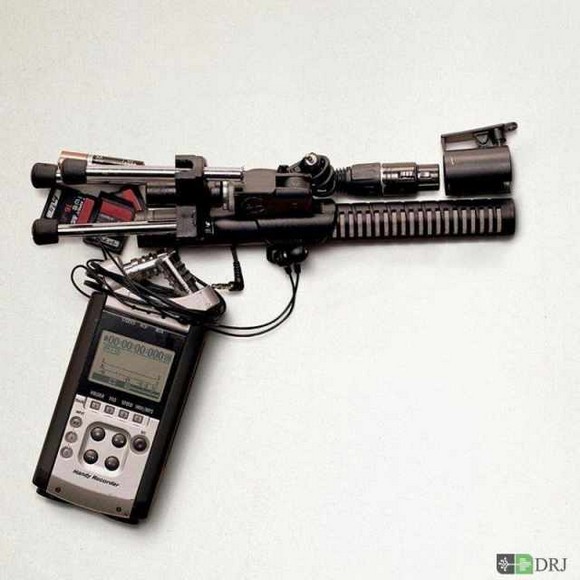“There are two types of art,” says Los Angeles-based artist Megan Whitmarsh, referencing critic Manny Farber’s 1962 essay, “White Elephant Art vs. Termite Art.” According to Farber, the white elephant is the singular, gleaming masterpiece, intent on achieving greatness. The termite, on the other hand, quietly burrows new paths in the earth, embodying art that’s “self-generative and world-building,” Whitmarsh explains, “and in a sense very personally driven.”
“Termite art” certainly describes much of this year’s “Made in LA.” the Hammer Museum’s biennial survey of local artists (on view through September 2). Handed entire galleries, the majority of the 33 participants filled them floor to ceiling with personal narratives of history, identity, sexuality, and community.
Even lacking a thematic curatorial directive, the disparate installations produce a portrait of Los Angeles’s artists who, much like the city itself, have evolved at a distance from the textbook historical canon. (As many have been pointing out as of late, textbooks excluded those who didn’t reflect their authors—namely, the white, cis male elephants of Europe and New York.)
Where female-, brown-, queer- and trans-identifying artists present worlds in which they’ve been given authorship, there’s a distinctly futurist sentiment to “Made in LA.” It’s an optimism with the bittersweet implication inherent in overthrowing the patriarchy: This is the endpoint of the world as we know it.
But as Farber put it, the termite’s genius lies in “eating away the immediate boundaries of his art, and turning these boundaries into conditions of the next achievement.” Whitmarsh puts it this way: “Termite art is the future.”
Below, a few artists describe their work in the Hammer’s exhibition—and their vision of what the future holds.
Beatriz Cortez’s Tzolk’in (2018)
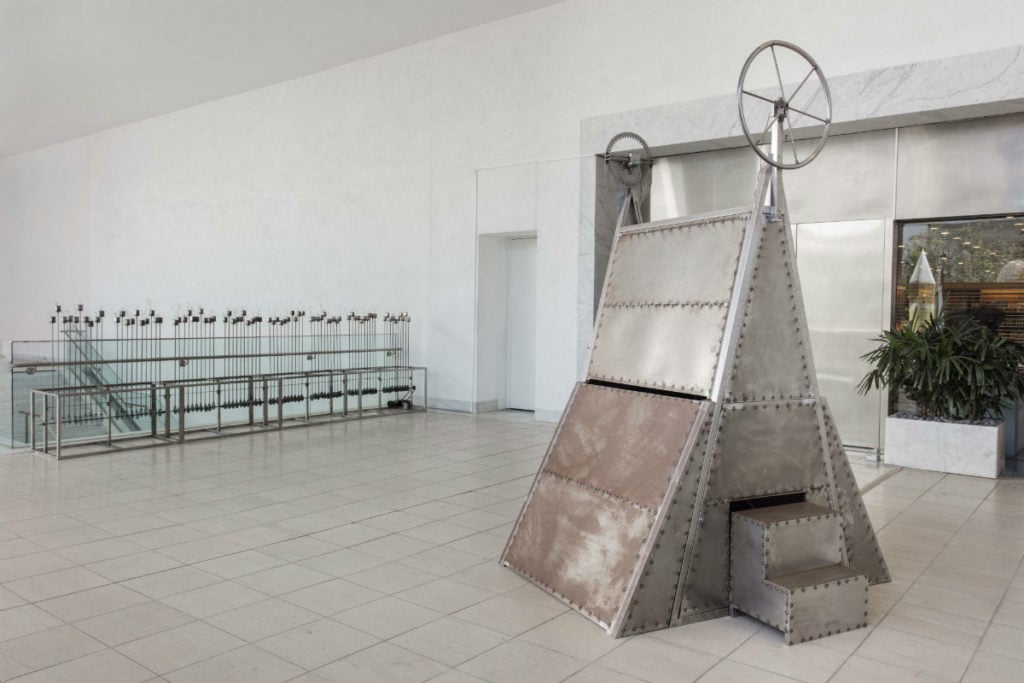 http://news.artnet.com/app/news-upload/2018/06/Made-in-LA-Install-152-1-300x200.jpg 300w, http://news.artnet.com/app/news-upload/2018/06/Made-in-LA-Install-152-1-50x33.jpg 50w, http://news.artnet.com/app/news-upload/2018/06/Made-in-LA-Install-152-1.jpg 1200w" sizes="(max-width: 1024px) 100vw, 1024px">
http://news.artnet.com/app/news-upload/2018/06/Made-in-LA-Install-152-1-300x200.jpg 300w, http://news.artnet.com/app/news-upload/2018/06/Made-in-LA-Install-152-1-50x33.jpg 50w, http://news.artnet.com/app/news-upload/2018/06/Made-in-LA-Install-152-1.jpg 1200w" sizes="(max-width: 1024px) 100vw, 1024px">Beatriz Cortez, Installation view, “Made in L.A. 2018,” June 3-September 2, 2018, Hammer Museum, Los Angeles. Photo: Brian Forrest
Cortez’s piece is a sculpture in two parts: two steel pyramids studded with rivets and capped with a perpetually turning, circular gear. One is stationed on the shaded terrace of the Hammer Museum, accompanied by tiny planters seeded with indigenous vegetables of the Americas. The other is 20 miles east at the Bowtie Project space on a bank of the LA River, glinting in the sun and shrouded by the intoxicating smell of wild Santa Maria shrubs.
Across that distance, the twin sculptures establish a tenuous line of communication. At the Hammer, a monitor plays surveillance footage of the Bowtie Project piece, although at the Bowtie Project space, there’s no way to see the Hammer.
Their unidirectional connection is a meditation on migration. “They don’t both offer the same circumstances or opportunities,” explains Cortez, who came to the United States from El Salvador when she was 18.
The two parts of her sculpture also reflect the state of simultaneity often experienced by the foreign-born: Mentally, one will continue to exist in two places at once.
The tzolk’in, the Maya’s sacred agricultural calendar, was depicted as a gear revolving on the interior of a circle. Its hypocycloid motion represents its own kind of simultaneity, the coincidence of the linear and the circular passage of time. Rendered here in the sci-fi industrial aesthetics of steel, it touches the specific futurism of Cortez’s body of work.
“We always imagine indigenous people being part of our past,” the artist told the New York Times last year. “I wanted to imagine indigenous people as part of our future.”
Jade Gordon and Megan Whitmarsh, OURCHETYPES (2018)
 http://news.artnet.com/app/news-upload/2018/06/Made-in-LA-Install-060-1-300x179.jpg 300w, http://news.artnet.com/app/news-upload/2018/06/Made-in-LA-Install-060-1-50x30.jpg 50w, http://news.artnet.com/app/news-upload/2018/06/Made-in-LA-Install-060-1.jpg 1200w" sizes="(max-width: 1024px) 100vw, 1024px">
http://news.artnet.com/app/news-upload/2018/06/Made-in-LA-Install-060-1-300x179.jpg 300w, http://news.artnet.com/app/news-upload/2018/06/Made-in-LA-Install-060-1-50x30.jpg 50w, http://news.artnet.com/app/news-upload/2018/06/Made-in-LA-Install-060-1.jpg 1200w" sizes="(max-width: 1024px) 100vw, 1024px">Jade Gordon and Megan Whitmarsh, Installation view, Made in L.A. 2018, June 3-September 2, 2018, Hammer Museum, Los Angeles. Photo: Brian Forrest.
While it may present itself as a parody of any of LA’s commercial New Age institutes, this installation’s mission to promote self-love and well-being is carried out in earnest. Combining Gordon’s performative practice with Whitmarsh’s hand-sewn sculptures, the gallery becomes a center for child-friendly, positive affirmations.
A face of individual fabric features, including plush eyelashes, lips, and an L-shaped nose, spans one gallery wall, while Gordon’s voice, like a slow pour of honey, glides through the space, assuring, “You are safe and protected.”
The installation has all the trappings of a commercial wellness institute, which blur the distinction between parody and reality. These include scheduled live programming (from crystal healing to group therapy sewing) and the Institute Channel, an artist-imagined closed-circuit TV station.
The station’s short films projected on the gallery wall detail nine “ourchetypes” that Gordon and Whitmarsh invented, in the vein of Carl Jung or a deck of tarot cards, but with less patriarchal imagery. The Portal, for example, is a black-and-white take-home zine that proclaims, “Menopause is enlightenment.” And their five-minute film The Garden of Nede inverts the Garden of Eden mythology when, in the future, a woman and an animal save man.
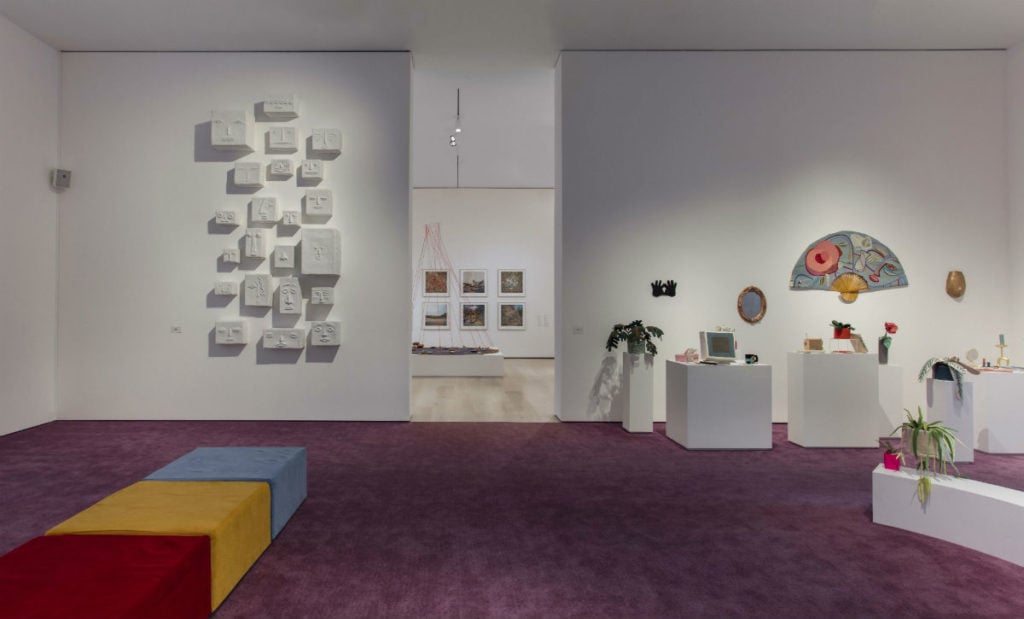 http://news.artnet.com/app/news-upload/2018/06/Made-in-LA-Install-068-1-300x181.jpg 300w, http://news.artnet.com/app/news-upload/2018/06/Made-in-LA-Install-068-1-50x30.jpg 50w, http://news.artnet.com/app/news-upload/2018/06/Made-in-LA-Install-068-1.jpg 1200w" sizes="(max-width: 1024px) 100vw, 1024px">
http://news.artnet.com/app/news-upload/2018/06/Made-in-LA-Install-068-1-300x181.jpg 300w, http://news.artnet.com/app/news-upload/2018/06/Made-in-LA-Install-068-1-50x30.jpg 50w, http://news.artnet.com/app/news-upload/2018/06/Made-in-LA-Install-068-1.jpg 1200w" sizes="(max-width: 1024px) 100vw, 1024px">Jade Gordon and Megan Whitmarsh, Installation view, Made in L.A. 2018, June 3-September 2, 2018, Hammer Museum, Los Angeles. Photo: Brian Forrest.
These “ourchetypes” effectively level the power structures that frame the female body as a handicap, particularly those surrounding motherhood. “What [pregnancy] implies is that apparently you’re just not that committed to your work,” says Gordon, recalling the anxieties she and Whitmarsh experienced during their own pregnancies. “I was afraid to tell my dealer,” Whitmarsh says.
But on the contrary, with the Institute’s childlike aesthetics and interactive format adopted from the artists’ own children, the underlying subtext here is that motherhood can be empowering—and, occasionally, provide great source material.
Neha Choksi, Everything sunbright (i) in the womb (ii) lives (iii) ever rehearsing the end * indirectly (2018)
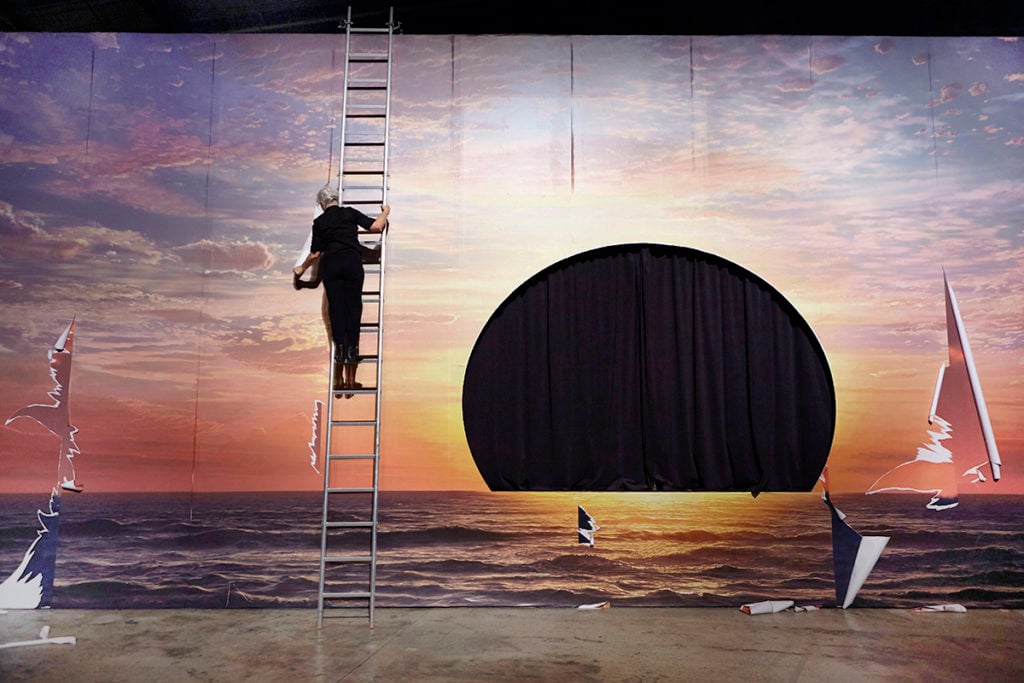 http://news.artnet.com/app/news-upload/2018/06/Neha-Choksi--300x200.jpg 300w, http://news.artnet.com/app/news-upload/2018/06/Neha-Choksi--50x33.jpg 50w, http://news.artnet.com/app/news-upload/2018/06/Neha-Choksi-.jpg 1200w" sizes="(max-width: 1024px) 100vw, 1024px">
http://news.artnet.com/app/news-upload/2018/06/Neha-Choksi--300x200.jpg 300w, http://news.artnet.com/app/news-upload/2018/06/Neha-Choksi--50x33.jpg 50w, http://news.artnet.com/app/news-upload/2018/06/Neha-Choksi-.jpg 1200w" sizes="(max-width: 1024px) 100vw, 1024px">Neha Choksi, The Sun’s Rehearsal/In Memory of the Last Sunset (2016). Courtesy the artist and Project 88, Mumbai. Photo: Zan Wimberley
In 2016, Choksi collaborated with dance artist Alice Cummins to create In the Sun’s Rehearsal, a performance in which Cummins tears away at billboard-sized images of a sunset, printed on eight layers of wallpaper.
At the Hammer, video of Cummins’s performance plays within a four-channel installation alongside footage of a home being similarly torn down; of the harsh desert landscapes surrounding Los Angeles; and of schoolchildren who’ve been paired with adults of different professions and instructed to draw images of the sun.
The juxtaposition of these images depicts the sun as both a powerful and terrifying force, but also one that can age and deteriorate, much like the human body. The work as a whole is an anticipation of the inevitable, what Choksi calls the “final fatal sunset,” when it fails to rise again.
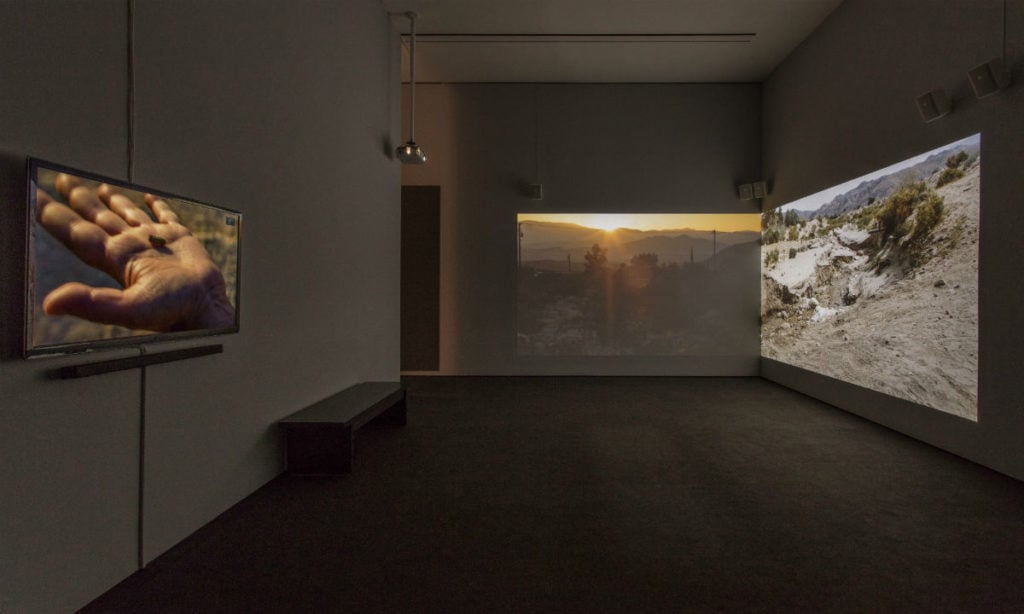 http://news.artnet.com/app/news-upload/2018/06/Made-in-LA-Install-215-300x180.jpg 300w, http://news.artnet.com/app/news-upload/2018/06/Made-in-LA-Install-215-50x30.jpg 50w, http://news.artnet.com/app/news-upload/2018/06/Made-in-LA-Install-215.jpg 1200w" sizes="(max-width: 1024px) 100vw, 1024px">
http://news.artnet.com/app/news-upload/2018/06/Made-in-LA-Install-215-300x180.jpg 300w, http://news.artnet.com/app/news-upload/2018/06/Made-in-LA-Install-215-50x30.jpg 50w, http://news.artnet.com/app/news-upload/2018/06/Made-in-LA-Install-215.jpg 1200w" sizes="(max-width: 1024px) 100vw, 1024px">Installation view of Neha Choksi in “Made in L.A.” at the Hammer
Museum, Los Angeles. Photo: Brian Forrest.
There is, however, an undercurrent of optimism: one depiction of a finger, tracing through a pile of black ashes, draws the rays of a new sun.
Charles Long, paradigm lost (2018)
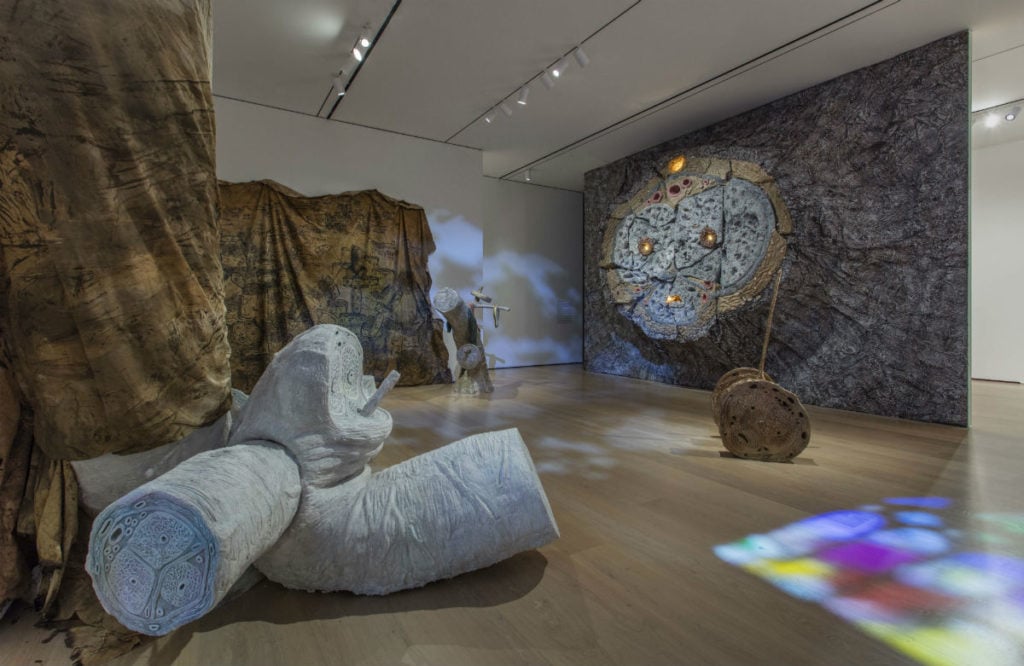 http://news.artnet.com/app/news-upload/2018/06/Made-in-LA-Install-204-300x195.jpg 300w, http://news.artnet.com/app/news-upload/2018/06/Made-in-LA-Install-204-50x33.jpg 50w, http://news.artnet.com/app/news-upload/2018/06/Made-in-LA-Install-204.jpg 1200w" sizes="(max-width: 1024px) 100vw, 1024px">
http://news.artnet.com/app/news-upload/2018/06/Made-in-LA-Install-204-300x195.jpg 300w, http://news.artnet.com/app/news-upload/2018/06/Made-in-LA-Install-204-50x33.jpg 50w, http://news.artnet.com/app/news-upload/2018/06/Made-in-LA-Install-204.jpg 1200w" sizes="(max-width: 1024px) 100vw, 1024px">Installation view of Charles Long in “Made in L.A.” at the Hammer Museum, Los Angeles. Photo: Brian Forrest.
It would be easy to mistake Long’s installation for a theme park enchanted forest; it’s full of anthropomorphized tree stumps, including one mounted sideways on the wall, floor to ceiling, embedded with sparkly rocks of crystal. What he’s actually made, however, is a forest of severed phalli.
Based in Mount Baldy, a snow-capped range about an hour east of Los Angeles, Long had seen the future of the patriarchy in the bodies of dead trees. “The fallen patriarchs are about to get chopped up, so what can we build out of them?” he had asked himself.
He searched online for what the cross-section of a penis would look like, and in the sections of spongy tissue he saw a face. The image inspired him to sculpt penis slices with the faces of Dalí and Munch and hang them from branches. He also recreated Giacometti’s sculpture of a chariot with penis slices for wheels and a phallus for a driver.
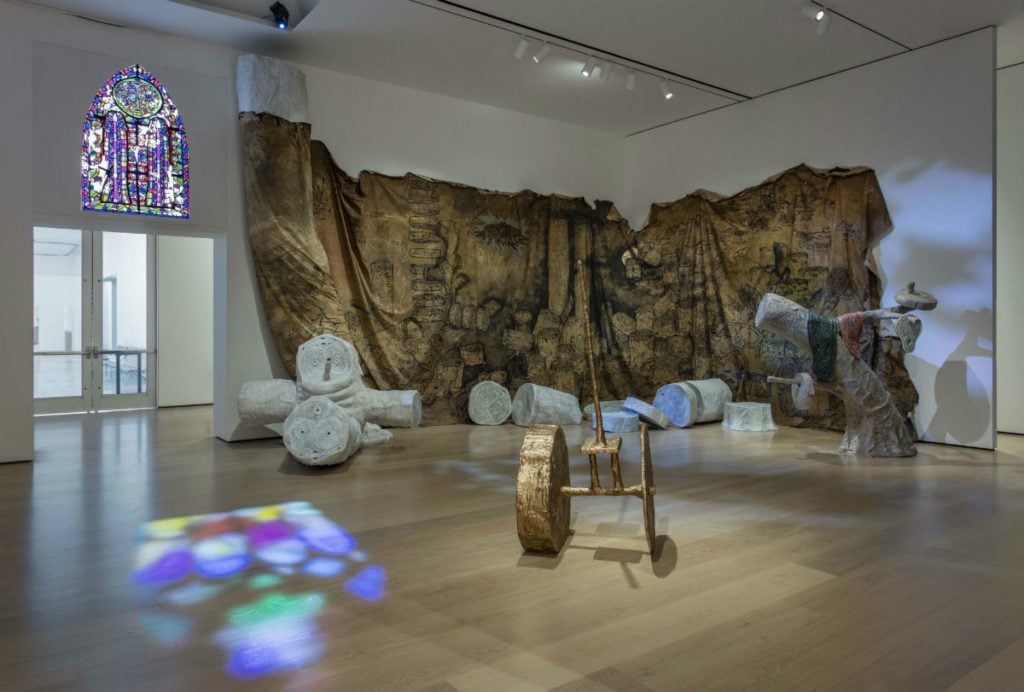 http://news.artnet.com/app/news-upload/2018/06/Made-in-LA-Install-198-300x203.jpg 300w, http://news.artnet.com/app/news-upload/2018/06/Made-in-LA-Install-198-50x34.jpg 50w, http://news.artnet.com/app/news-upload/2018/06/Made-in-LA-Install-198.jpg 1200w" sizes="(max-width: 1024px) 100vw, 1024px">
http://news.artnet.com/app/news-upload/2018/06/Made-in-LA-Install-198-300x203.jpg 300w, http://news.artnet.com/app/news-upload/2018/06/Made-in-LA-Install-198-50x34.jpg 50w, http://news.artnet.com/app/news-upload/2018/06/Made-in-LA-Install-198.jpg 1200w" sizes="(max-width: 1024px) 100vw, 1024px">Installation view of Charles Long in “Made in L.A.” at the Hammer
Museum, Los Angeles. Photo: Brian Forrest.
Recalling figures in Philip Guston’s paintings standing at their easels smoking cigarettes, he crafted a phallus blowing smoke out of another phallus while being penetrated by yet another—but penetrated sideways, not sexually. Long says that he was conscious to remove any symbols of aggression or violence.
“Because the patriarchal apocalypse has happened, what’s left is disarming or dismembering,” he says. “It’s just a world of severed dicks, a fairy-tale world where something new could happen.”
Here, the felled trees of the patriarchy are put to use as lumber. “When I Googled the cross-section of a penis, what I saw was a look of confusion, like it was asking me a question. I realized what the face was asking me: What are you going to build?”
The post How 5 Artists in Hammer’s Made in LA Biennial Are Using Their Work to Imagine a Better Future appeared first on artnet News.

ایده ها برای استارت آپ موجب رونق کسب و کارهای اینترنتی
آینده / استارت آپ

استارتآپها ادبیات بازار سرمایه را بلدند؟
استارت آپ
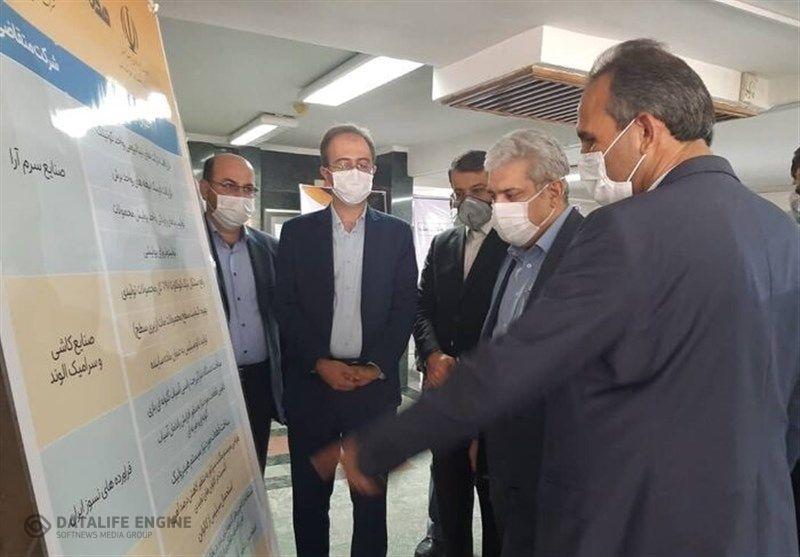
صدور تاییدیه دانش بنیانی شتابدهنده صدر فردا
اخبار / استارت آپ
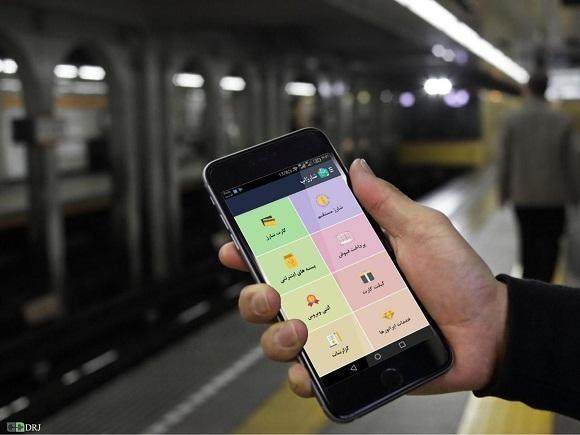
اپلیکیشن شارژاپ
گوناگون / استارت آپ / رپرتاژ آگهی / بازتاب

جذابترین ایدههای B2B در سال 2020
استارت آپ

تعریف استارت آپ startup
دانشنامه / استارت آپ / مقاله

۱۰ استارتاپ که بدون سرمایه به سوددهی رسیدند
استارت آپ

ایده ها و پیشنهاد برای استارت آپ در سال جدید
راهکارها و ترفند ها / استارت آپ
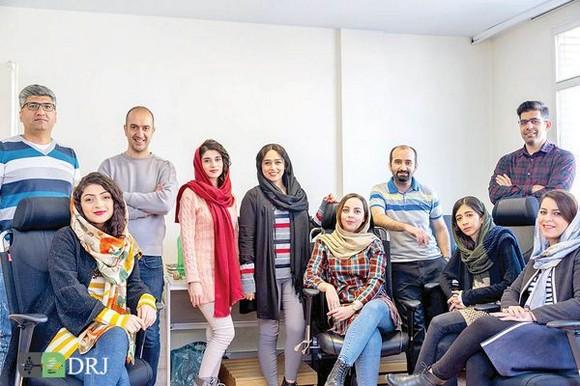
استارتآپ ایرانی؛ مرجع اول زنان افغان
استارت آپ

شروع یک کسب و کار نوپا پلتفرمی
استارت آپ

برنامه شبکه اجتماعی تیندر
گوناگون / معرفی وب سایت / استارت آپ

10 استارت آپ برتر تاکسیرانی جهان
استارت آپ

پخت پیتزاهای هیجان انگیز با هوش مصنوعی
آینده / استارت آپ

ایده های استارتاپی فراموش شده
دورنما / بازار / استارت آپ

اپل، استارتاپ فناوری خودران Drive.ai را تصاحب کرد
استارت آپ
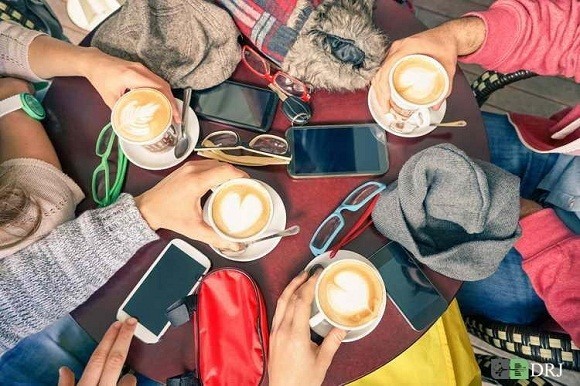
بررسی مهمترین چالشهای تیمهای استارتاپی
استارت آپ
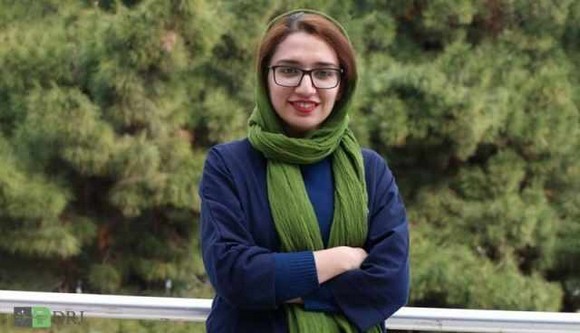
نگرانی کاربران از هزینه تعمیر و تامین قطعات
گفت و گو / بازار / استارت آپ
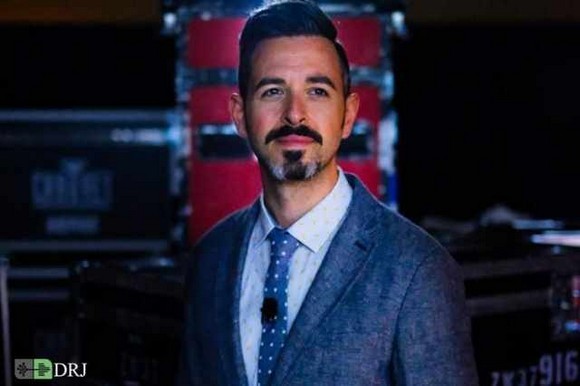
مصاحبه با مدیرعامل و بنیانگذار استارتاپ Moz
گفت و گو / استارت آپ

آشنایی با استارت آپ های حوزه مدیریت آب
استارت آپ

راه اندازی ۷۰ استارت آپ توسط نخبگان ایرانی
استارت آپ

معرفی هشت استارتآپ موفق ایرانی در حوزه فینتک
استارت آپ

اولین مرورگر شرعی دنیا
استارت آپ
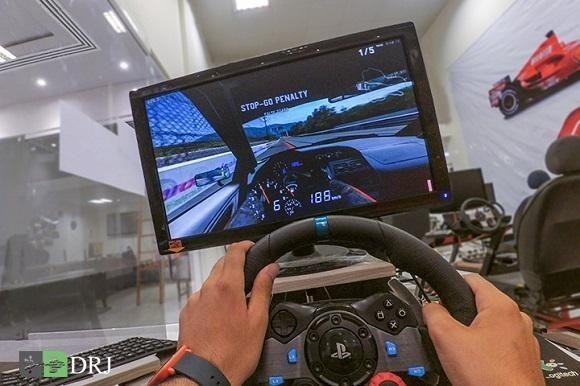
از صفر تا پیست
استارت آپ

معرفی برترین استارتاپهای CES 2019
اخبار / استارت آپ
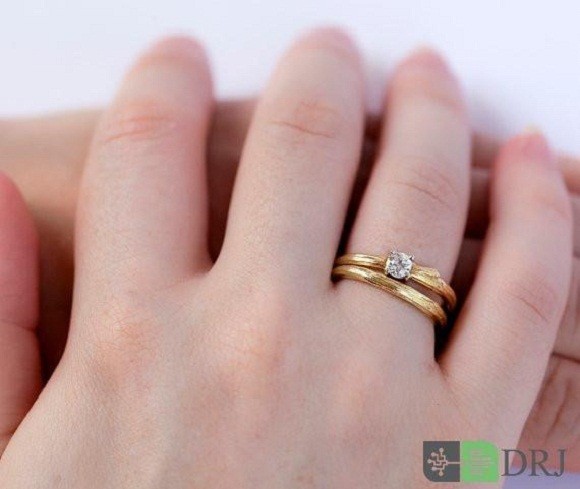
ازدواج با فرد ثروتمند یا خوش اخلاق
سبک زندگی / برترین ها
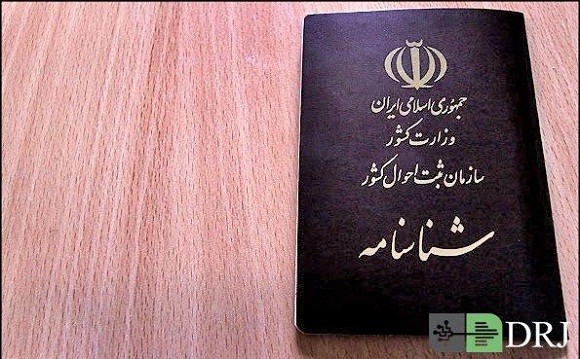
هدف از تشکیل خانواده چیست
سبک زندگی
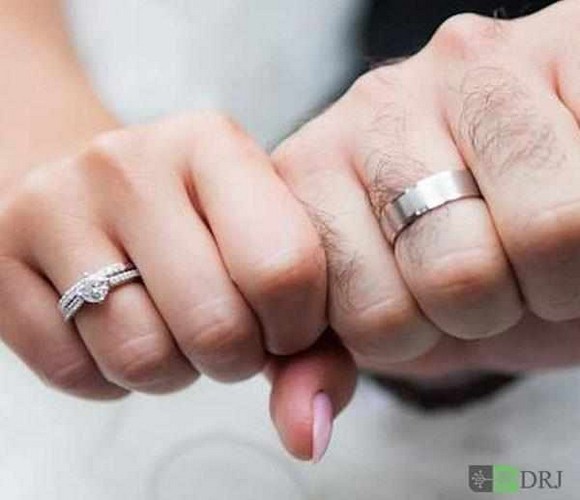
اول عاشق شویم، بعد ازدواج کنیم
سبک زندگی

خانواده چیست
سبک زندگی

مشاوره خانواده چیست؟
سبک زندگی

اولویتهای پسانداز خانواده چیست؟
سبک زندگی

هزینه های خانواده چیست؟
سبک زندگی

راهکار بیشتر حرف زدن اعضای خانواده چیست؟
سبک زندگی

چرخه زندگی و خانواده چیست؟
سبک زندگی

اهداف و اصول تشکیل خانواده
سبک زندگی

آموزش جنسی نادرست به سبک خانم جلسه ای
سبک زندگی
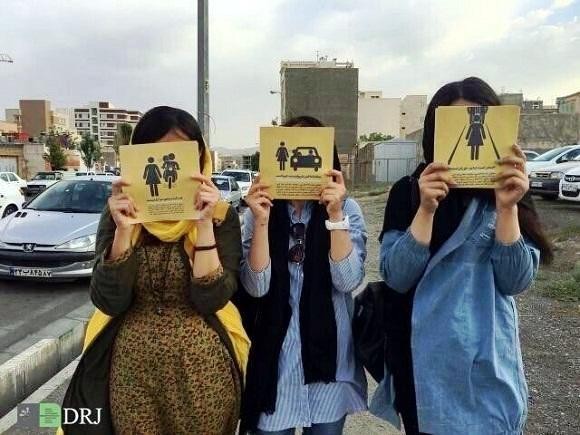
لطفا تماشاچی آزار زنان نباشید!
سبک زندگی

کودک آزاری؛ از نشانهها و دلایل تا درمان
گزارش / سبک زندگی / پرورش کودکان

روش های تعیین هدف و مسیر زندگی برای رسیدن به موفقیت
سبک زندگی
مجله اینترنتی دیپروتد نشریه مجازی بر بستر اینترنت به مسائل آموزشی و مقالات پیرامون کسب وکار های نوپا یا استارت آپ ها و سبک زندگی است فعالیت و محتوای مطالب ارائه شده در سایت همه بیشتر در حوزه مدیریت، کارآفرینی ، روانشناسی ،اقتصادی و فناوری اطلاعات است نام اصلی دیپروتد "ریشه های عمیق " با مجوز رسمی از هیات نظارت برمطبوعات مشغول به فعالیت است
ما را در شبکه های اجتماعی دنبال کنید
تمامی حقوق برای سایت فوق محفوط است.
S-TECH: ایرانی توانمند | Powered by: مجله اینترنتی دیپروتد
